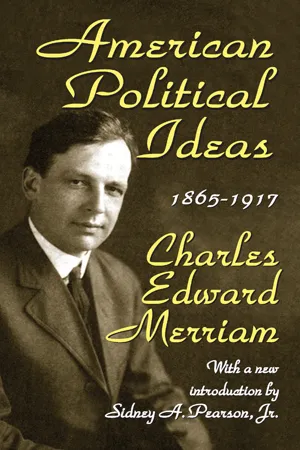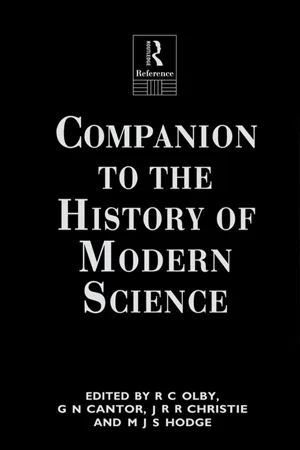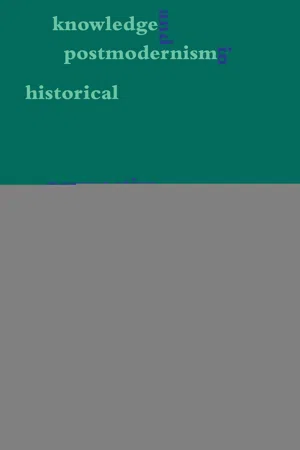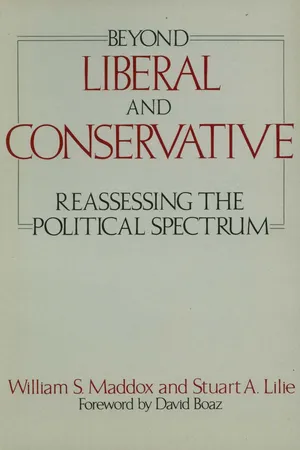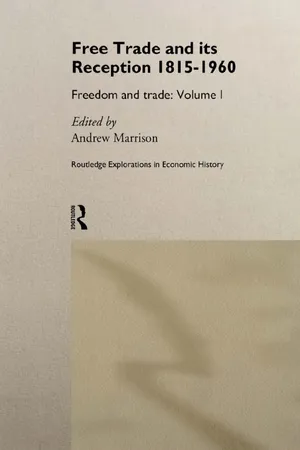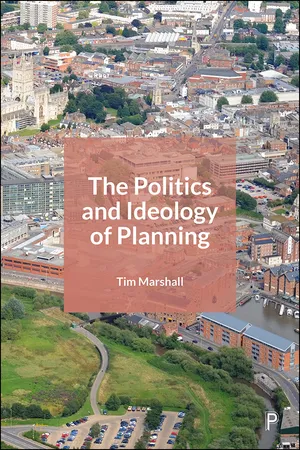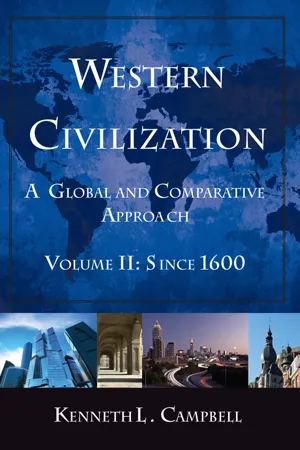History
Political Ideologies of the 19th Century
The 19th century saw the rise of various political ideologies, including liberalism, conservatism, and socialism. Liberalism emphasized individual rights, free markets, and limited government intervention. Conservatism sought to preserve traditional institutions and social hierarchies. Socialism advocated for collective ownership of the means of production and the redistribution of wealth to achieve social equality. These ideologies shaped political movements and policies throughout the century.
Written by Perlego with AI-assistance
Related key terms
7 Key excerpts on "Political Ideologies of the 19th Century"
- eBook - ePub
- Charles Merriam(Author)
- 2017(Publication Date)
- Routledge(Publisher)
AMERICAN POLITICAL IDEAS CHAPTER I THE BACKGROUND OF AMERICAN POLITICAL THOUGHT I T is important at the outset to sketch briefly the fundamental conditions under which the American political thinking of the last half-century has been carried on — to inquire into the outstanding factors of our growth since the Civil War. What are the new conditions out of which new political interpretations are shaped or new ideas have sprung? What are the new forces that have led men to frame new formulas, and new philosophies? 1 The nineteenth century was full of new political forces and forms. Individualism of the eighteenth-century type deepened into the nineteenth-century laissez faire, and still further developed into the unanticipated doctrines of philosophical anarchism. Democracy, the revolutionary ferment of the seventeenth and eighteenth centuries, took the new form of Liberalism in its varying shades, and at times passed over into the garb of Collectivism and of Socialism. About the mid-century Nationalism appeared as a distinct political doctrine, on the basis of which were made states of the type of America, Italy and Germany, while many smaller nationalities lifted up their heads. With the expansion of European powers, rose the familiar figure of Imperialism, and with the rapid expansion of transportation and communication, Internationalism appeared on the horizon of the national state. Democracy, representative government, constitutionalism, universal suffrage, developed in the Orient as well as in the Occident. But there also arose a new Aristocracy clothed in forms appropriate to modern life and philosophy; now in the garb of the divine right of the industrial aristocracy, the precedence of the captain of industry. And again in the amazing combination of the throne and modern industrialism seen in the German state, militarism appeared equipped with all the devices of modern science and philosophy, and with all the weapons of a modern mechanical age - eBook - ePub
- G N Cantor, G.N. Cantor, J.R.R. Christie, M.J.S. Hodge, R.C. Olby(Authors)
- 2006(Publication Date)
- Routledge(Publisher)
66 Science and Political Ideology, 1790–1848 Dorinda Outram DOI: 10.4324/9780203191873-741. Introduction and Historiography
Few topics have aroused such sustained debate, and posed such acute methodological problems in the history of science, as the relations between science and political ideology. The problem is especially acute for the period 1790–1848 because this was a period of great change and flux both in the content and insti-tutionalisation of science, and in the whole field of political ideology. In particular, in France, the Revolution which began in 1789 and ended in 1799, had produced radical and enduring questioning of previously held political ideas; a questioning which had affected most other European countries to a greater or lesser degree. At the same time, during the period 1790–1848, Britain experienced the first thoroughgoing industrialisation. This brought with it social strains, economic changes and a search for new ideas on many sides, to challenge or to justify the new social and political order which industrialisation brought with it.In these circumstances, it is not surprising that the history of science has failed to reach any historiographical consensus, or even a coherent tradition of approach to this question. Science and politics were generally, until quite recently, held rigidly separate by the practitioners both of science and of the history of science. History of science uncritically accepted the claims of nineteenth-century science that it was a value-free, apolitical activity, and it thus made little or no sense to integrate scientific and political ideas. In spite of obvious counter-examples in the real world such as Social Darwinism, or eugenics, this denial, within the history of science, of the links between science and politics held sway at least until the late 1950s.After that time, history of science itself gradually began to loosen its links with science, and to reforge its links with general history. A growing perception of the history of science as a historical discipline in its own right, rather than as an ancillary discipline to the sciences, allowed the gradual entry into the field of the problem of the relations between science and political ideology. At the same time, the increasing polarisation between right and left, which was a hallmark of political life in the 1960s in France, the United States and to a lesser extent Great Britain, also refocused attention on the pre-history of many radical ideologies which had pre-figured Marxism and socialism. All these changes ushered in more explicit recognition of connections between science and political ideology. - Joyce Appleby, Elizabeth Covington, David Hoyt, Michael Latham, Allison Sneider, Joyce Appleby, Elizabeth Covington, David Hoyt, Michael Latham, Allison Sneider(Authors)
- 2020(Publication Date)
- Routledge(Publisher)
Liberalism, however, as the compass by which the progress of nations was to be directed, was not a political philosophy ensured of immediate, unqualified success. Even by the end of the century, liberalism was by no means unconditionally victorious. Although the French had done away with one monarchy, they were soon to replace it with another, and near the close of our period most European nations had crafted some sort of political compromise between older, monarchical traditions and the newer ideals of democratic representation. As for the United States, it was to develop its own particular variety of democratic conservatism, which, since the beginning, has been wary of the modern changes embraced by advocates of liberalism.In spite of the many obstacles facing liberalism, supporters of liberalism as a form of political and moral culture managed, over the course of the nineteenth century, to forge a consensus on both sides of the Atlantic that humankind had emerged from the tyranny of past ages into the light of reason and benevolent interaction. Trade, not war, would guarantee peace between nations, while science and technology would assure the eradication of all those ills (poverty, sickness, ignorance) that earlier times had accepted as the “will of God,” or the necessary consequences of social stability. The nineteenth century witnessed the powerful alliance of science, liberal politics, and market economics in the name of a crusade against the shadows of obscurantism, the ravage of nature, and the imperfect nature of man himself. It was the great age of Progress. In all cases, on any side of the political spectrum, political positions depended for their conviction upon some relation of appraisal, whether critical or positive, towards revolutionary history and the place of modern science in the world. Historical progress in history and the reason of natural science became ideologically inseparable.Yet just as there are those today who dispute the notion of the “progress” of this general alliance of science, liberalism, and capitalism, so it was during the nineteenth century. The very power of the liberal vision may be said to have provoked some of the greatest minds of the nineteenth century to provide detailed and elaborate accounts of the unforeseen and often undesirable social changes taking place, in order to better express their reservations and cautions. In order to understand the classic texts of nineteenth-century thought, we must have some sense of the complexity of the society that welded together the liberal vision and defended it from its critics while at the same time allowing alternative visions to grow in the shadows. Supporters and critics of modernity did not live in two different worlds; they were both of their time.- eBook - ePub
Beyond Liberal and Conservative
Reassessing the Political Spectrum
- William S. Maddox, Stuart A. Lilie(Authors)
- 1984(Publication Date)
- Cato Institute(Publisher)
Figure 1Our analysis uses these two issue dimensions-government economic intervention and expansion of personal freedoms-to define four rather than two ideological categories. We label these liberal, libertarian, populist, and conservative. Specifically the two dimensions combine as shown in figure 1. Liberals support government economic intervention and expansion of personal freedoms; conservatives oppose both. Libertarians support expanded individual freedom but oppose government economic intervention; populists oppose expansion of individual freedom but support government intervention in the economy. These four categories can be justified both theoretically and empirically. This book presents empirical evidence regarding these political attitudes of Americans. In this chapter we develop the theoretical and historical meaning of our four categories and show how they derive from the traditional political thought of the past few centuries.I SSUE D IMENSIONS AND I DEOLOGICAL C ATEGORIESThe Nature and Meaning of Ideology
There is much confusion about the meaning and content of such ideological terms as "liberalism" and "conservatism." There is even controversy over the meaning of the term "ideology" itself. Even a quick glance at the literature reveals dozens of different specifications of what constitutes an ideology. For our purposes, though,itis useful to think of ideology at two different levels, at the philosophicallevel and at the level of mass belief systems. At the phil-osophicallevel an ideology may be said to be a set of interrelated ideas that purport both to explain how the political and social world works and to prescribe how that world should operate. At this level an ideology includes three elements: (1) a more or less complex, systematic set of normative statements setting forth political and social values; (2) descriptive and analytical statements intended to elaborate on those political values and provide a guide for explaining and evaluating political events; and (3) prescriptions describing desired political, economic, or social conditions. Thus, when viewed at the philosophical level, an ideology involves the elaboration of a world view and of desired processes of political change to reach desired values or goals (Dolbeare and Dolbeare 1971). The purpose of an ideology may be to provide a guide to action, to persuade others, to give legitimacy to a set of social structures, to engender passive acceptance of a set of social-political arrangements, or some mix of these purposes. Ideology thus understood is generally, although by no means exclusively, the province of philosophers and intellectuals. The masses of ordinary citizens seldom articulate an ideology, if ideology is defined solely in these terms. - eBook - ePub
- Andrew Marrison(Author)
- 2002(Publication Date)
- Routledge(Publisher)
5INTERESTS, IDEOLOGY AND POLITICS
Agricultural trade policy in nineteenth-century Britain and Germany
Cheryl Schonhardt-BaileyFew would disagree that economic interests are central to explaining political outcomes. Yet several authors have started to identify the limitations of theories that rely solely on economic interests to explain political behaviour, and the pendulum seems to be swinging towards a more ‘political’ bent to political economy. Some authors emphasize the political process of policy making, while others integrate ideas and ideologies into models of decision making.1 In this chapter I build on the new ‘ideas and ideology’ literature. I develop hypotheses for how variations in the means by which ideology and interests are channelled through political organizations (parties, groups) can affect trade policy outcomes. The logic of the hypotheses derives from party theory, and is complemented by insights from the electoral and legislative voting literatures. These hypotheses are applied to Britain and Germany in the nineteenth century.Defining ideology
One fairly common misunderstanding of ideology is that it suggests some form of non-rationality, that is, some ‘residual or random component of conscious human decision making.’2 Hinich and Munger, who rightly object to this characterization of ideology, note that Marx’s definition of ideology as false consciousness is chiefly responsible for giving ideology a bad name.3 Indeed, so distasteful is the word ‘ideology’ that the international relations literature avoids it altogether, and instead speaks of ‘ideas’.4 This chapter will adhere unabashedly to the term ideology, but will aim to explore in detail the related concepts of ideas, partisanship and political doctrines.Work by Hinich and Munger and by Goldstein offers a strong foundation for a functional definition of ideology. Hinich and Munger build a theory of elections based on ideology, while Goldstein explains inconsistencies in American trade law by envisaging policy as a patchwork quilt of new and old policy ideas. The authors agree that, informally, ideology may be defined as a collection of ideas. Yet their formal definitions differ markedly. Simply put, for Hinich and Munger ideology helps to explain the choices that voters make in elections, while for Goldstein ideology explains the policy choices that politicians make. Taken together the volumes identify three distinct functions of ideology: (1) ideology acting as some form of ‘road map’ for both voters and policy makers; (2) ideological ‘images’ on which voters, politicians and parties rely to distinguish one political party from another; and (3) ideology encased in institutions, within which it then affects the evolution of public policy. In this chapter, functions (1) and (2) are most relevant. - eBook - ePub
- Marshall, Tim(Authors)
- 2020(Publication Date)
- Policy Press(Publisher)
3 Ideologies in Britain, with initial linking to planning This chapter explores the main ideologies and their links to planning. It therefore starts to detail the ideology-and-planning connections. Chapter 4 gives a historical overview of Britain’s planning development as seen through the conceptual lens used in this book, as well as a more detailed history of one recent government’s management of planning reforms. The primary ideologies in Britain, and initial linking with planning We now look more carefully at the range of ideologies with influence in Britain, and begin to make connections with how they have affected planning. We have to get to grips with the ‘ideological landscape’ (Berry 2011, p 2), a term which usefully highlights that at any moment there is a spread of ideological influences in play, pressing on day-to-day policy formation, and with relational effects – if one part of the landscape changes, that can have knock-on effects on other parts, over time. A first decision needed in all surveys of ideologies is which ideologies to cover. Textbooks make varied choices. The massive handbook on political ideologies edited by Freeden, Sargent and Stears (2013) has 20 chapters in the section on specific ideologies, although around half are not on ‘isms’, having a more topic or geographical character. Shorter treatments are likely to limit themselves to the big three of the 20th century, liberalism, conservatism, socialism, plus whatever extra ideologies are seen as key at the moment of writing – communism and fascism in the post-war decades, new movements such as feminism and environmentalism from the 1980s. Freeden (2003) considers the distinction between ‘thick’ and ‘thin’ ideologies. The classic ‘thick’ political ideologies are seen as having a depth which allows some view to be taken across most of the core questions facing societal action, and so governmental policies - eBook - ePub
Western Civilization: A Global and Comparative Approach
Volume II: Since 1600
- Kenneth L. Campbell(Author)
- 2015(Publication Date)
- Routledge(Publisher)
The French Revolution spawned or furthered a series of cultural and ideological movements that divided European intellectuals, politicians, and revolutionaries. These movements often combined and overlapped in various configurations, but each one formed a separate strain of thought that shaped European thought, culture, and politics in the nineteenth century. Nationalists stressed the primary identification of the individual with the nation. People who thought primarily in terms of nationalism believed that those of a single nationality should share a common state and that those of each nationality should have their own state. Liberals continued the call for political and economic freedoms and the extension of civil and voting rights. Conservatives emphasized the value of tradition and the need for change to occur gradually in a way that did not break abruptly with the past. Socialists sought a greater degree of social and economic equality and improvements in the lives and conditions of the working classes. Finally, romanticism was a complex and often contradictory movement that embraced some aspects of the revolutionary tradition and rejected others.Since the Vienna settlement presented a huge obstacle to the political aspirations of nationalists, many nationalists turned their attention to cultural nationalism to bolster a sense of common identity. Poetry, music, art, and literature all served the interests of nationalism and helped to prepare the way for nationalist uprisings throughout Europe later in the century. The Germans in particular thought of nationalism in near mystical terms, speaking of the Volkgeist , or “spirit of the people.” Yet at least in the first half of the nineteenth century, many nationalists from different countries supported one another as if they all shared a common cause.Nationalism was also commonly associated with liberalism in the first half of the nineteenth century. Liberals adopted many of the ideas of the Enlightenment, especially the confidence that society could be reformed with the guidance of reason and common sense. Liberals believed in the Enlightenment notion of the fundamental equality of human beings and that those beings had certain inalienable rights: freedom of speech, freedom of assembly, freedom to worship as they pleased, and the right to fair and equal treatment under the law. Liberals thus challenged privileged individuals and institutions such as monarchs, nobility, and the church, none of which they regarded as above the law. They tended to believe that the church had no role in politics whatsoever. The main objective of political liberalism was that the people have a voice in the government through some form of representative assembly. Some European liberals demanded nothing less than a republic similar to the United States. Whereas the French experiment with a republic had ended in dictatorship, by 1815 the survival of the United States of America provided a successful example of the possibility of a liberal, democratic form of government. Liberals in countries that did not yet have a constitution of any kind would have settled for a constitutional monarchy. Russian liberals, for example, merely hoped for a constitution and the abolition of serfdom. German liberals believed that their goals could only be achieved through German unification. Liberals everywhere favored an extension of voting rights, but their demands usually applied only to men of property. Economic liberalism, which had its roots in the classical economic philosophy of Adam Smith, was based on a belief in the benefits of free trade and an economy that operated according to the natural laws of supply and demand without any governmental interference. But John Stuart Mill (1806–1873), a leading proponent of liberal ideas in the nineteenth century, wanted to build into liberalism some protection for the disadvantaged and a role for society in ensuring that everyone’s basic needs were met.
Index pages curate the most relevant extracts from our library of academic textbooks. They’ve been created using an in-house natural language model (NLM), each adding context and meaning to key research topics.
